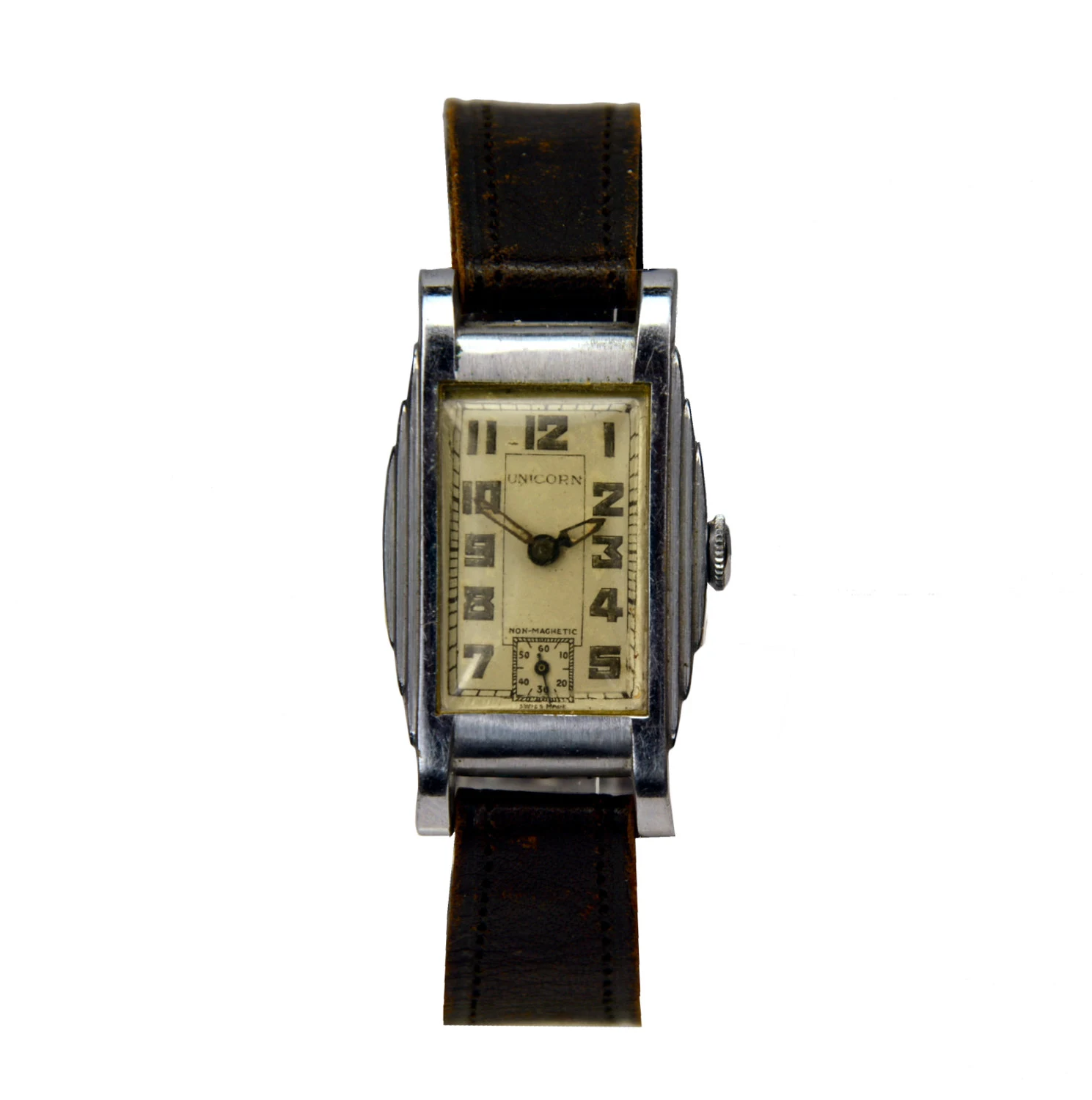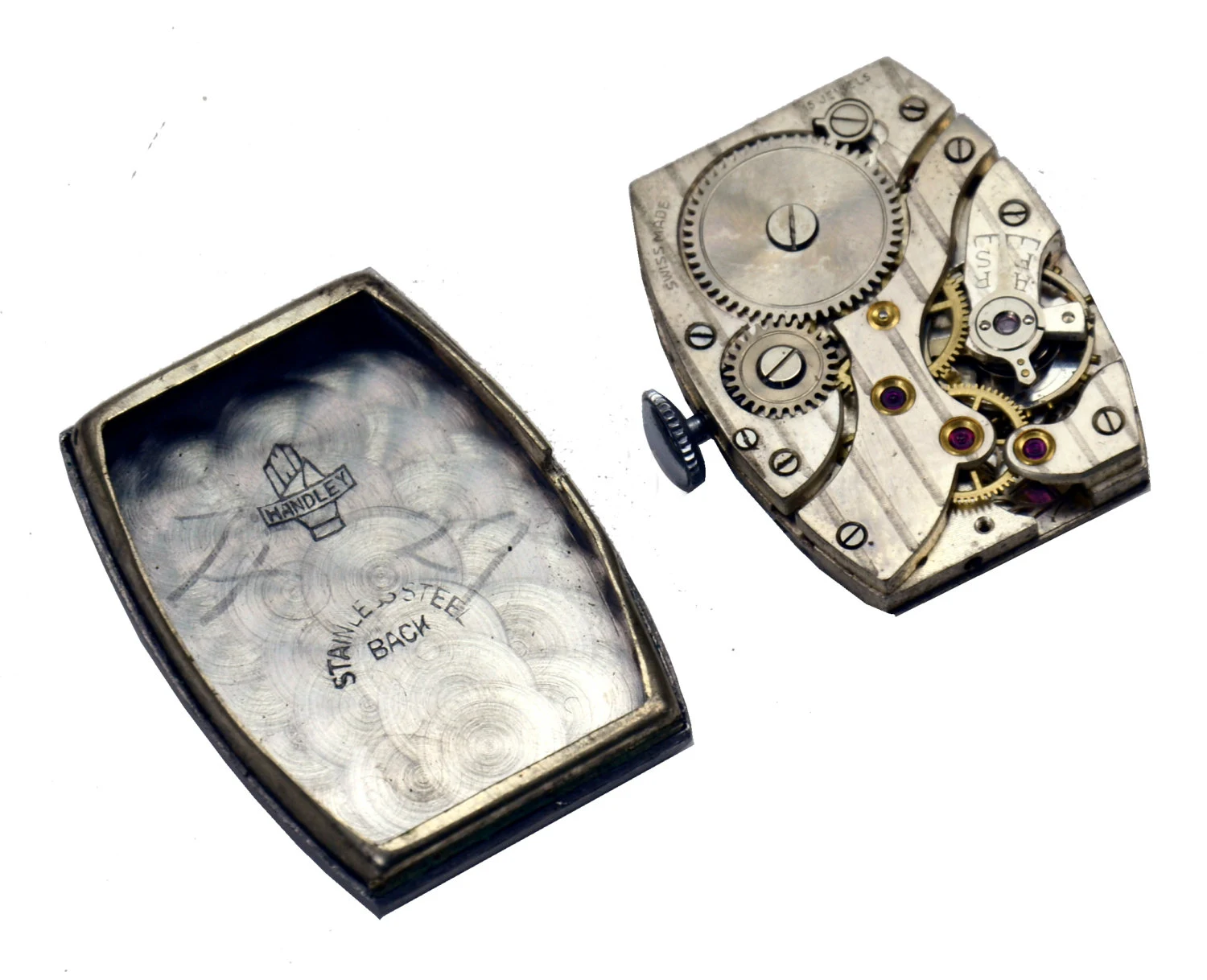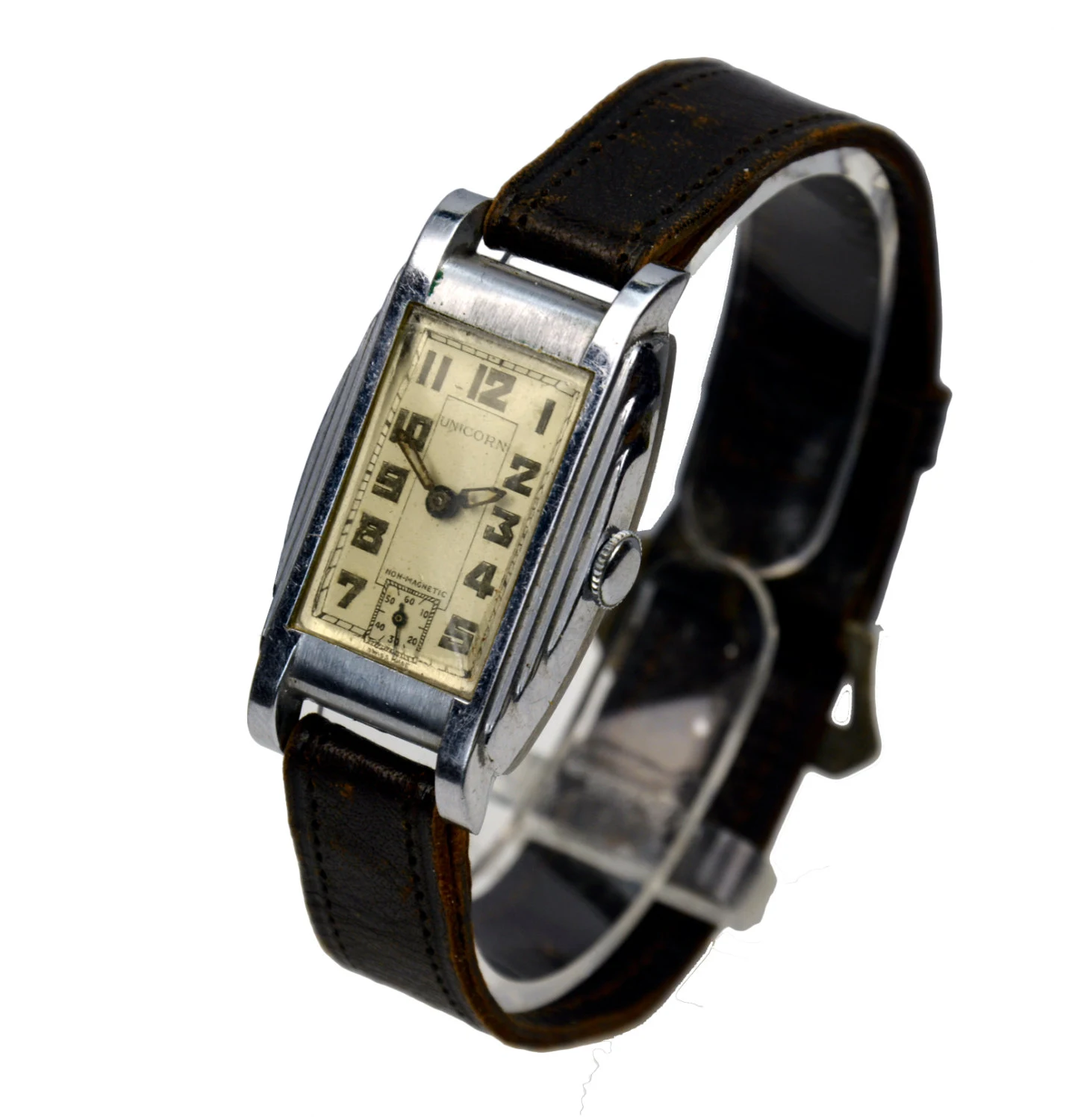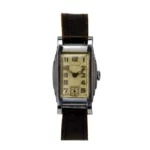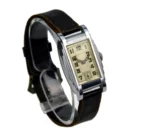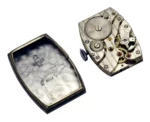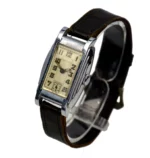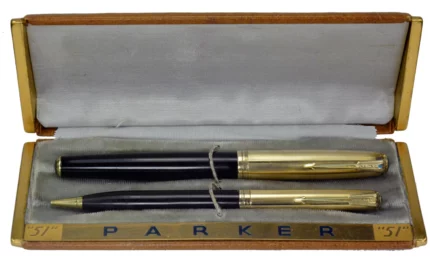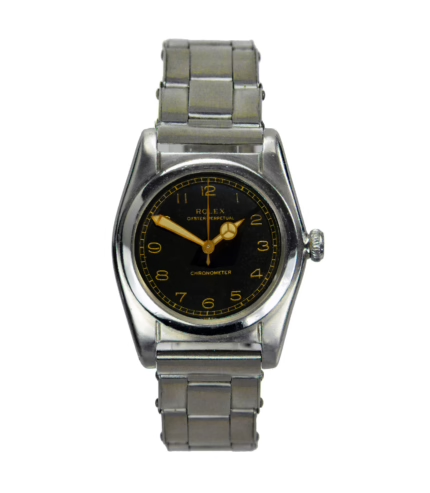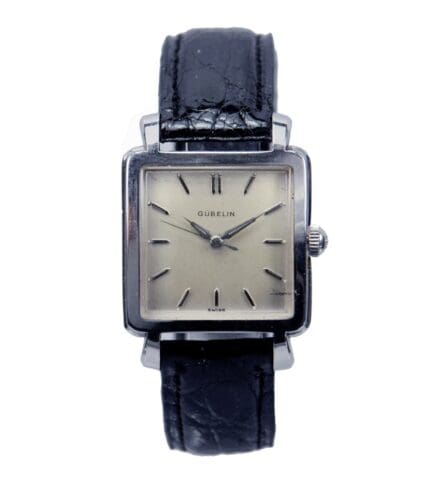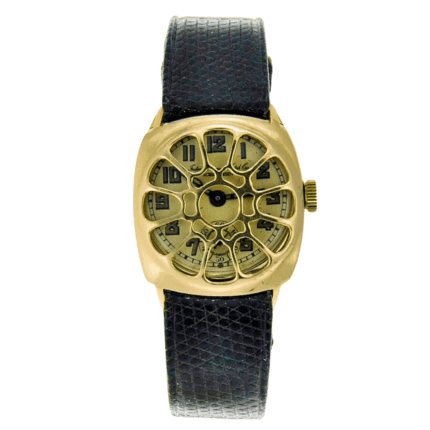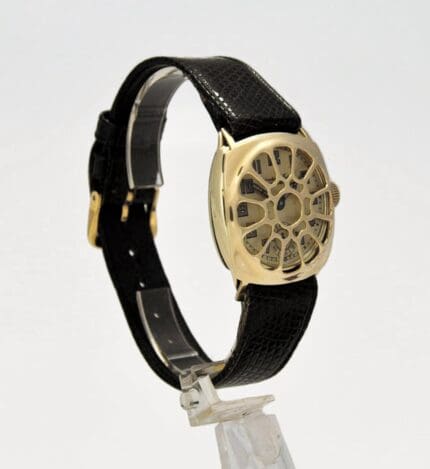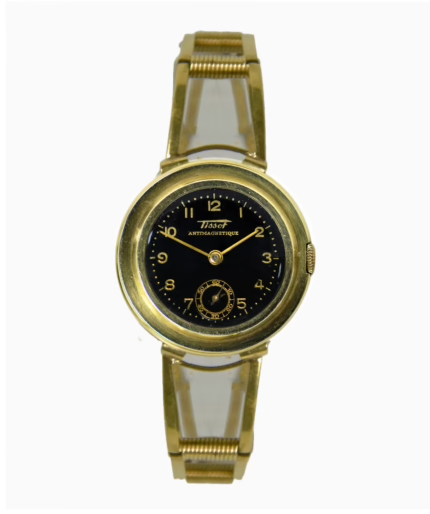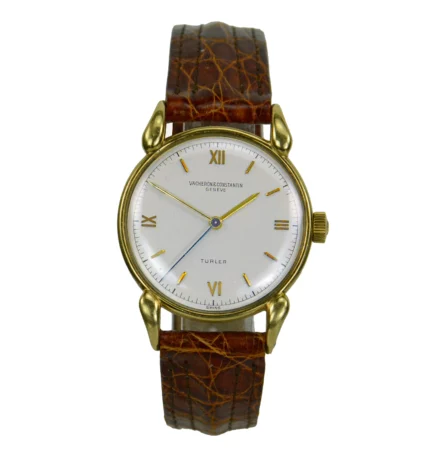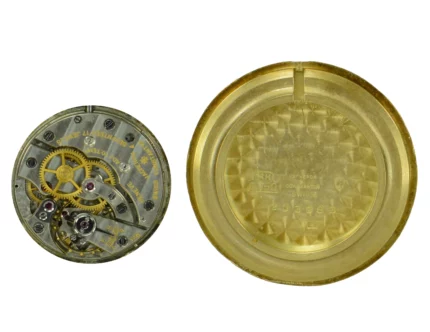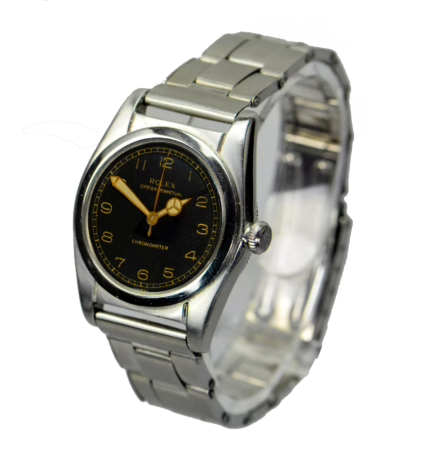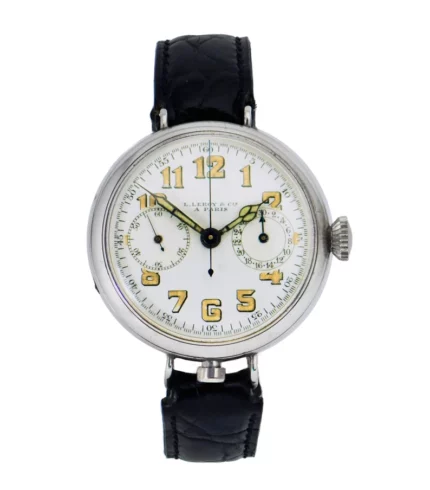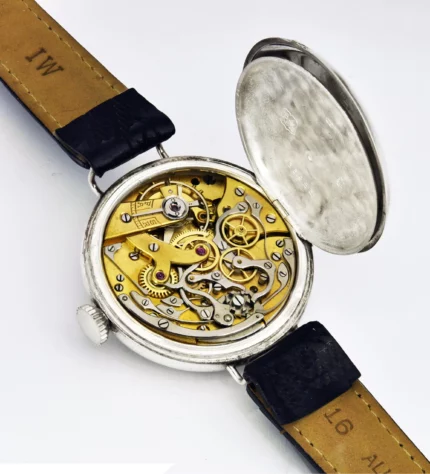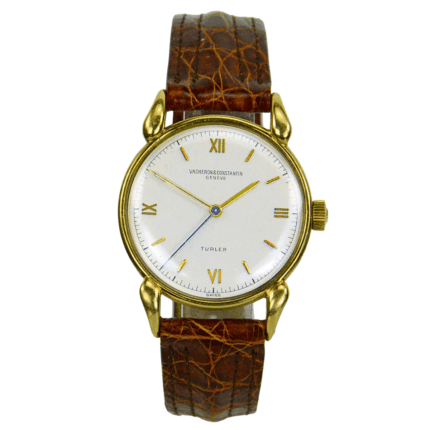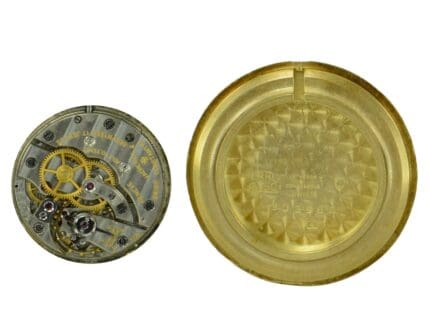Rare and Historical ** Original Vintage Rolex Unicorn Stepped Case Art Deco Wristwatch, Switzerland ca 1935 **
This very fine and beautiful vintage Rolex wristwatch, with its elegant stepped case, luminous numerals dial and skeleton steel poker hands… is a true Art Deco classic. It also constitutes the intersection between Rolex’s and Australia’s history!
Rolex began life as an English company, until it moved to Switzerland following World War I. During the first half of the 20th century the British Commonwealth as well as other countries levied high import duties on finished watches imported from Switzerland. For this reason, Rolex largely imported bare movements into England, Australia and the USA and completed and cased these locally, using watch cases that were produced in the same market as where they would be sold.
Rolex watches produced for the Australian market had watch cases that were custom manufactured for Rolex by Australia’s most important watch case manufacturer: J. W. Handley (called Handley & Tilley until 1934). Interestingly, in addition to providing the watch cases for Rolex, Handley – in parallel – manufactured those used by Dunhill, Omega, Tissot and Movado, as well as by other leading watch companies.
- Dimensions: 23 mm (excluding the winding crown) x 40 mm (lug to lug)
- Signatures: Dial original and fully signed Unicorn. Case original and appropriately signed with the Handley “open hand” trademark and brand.
- Movement: High-grade, with Côtes Genève (Geneva waves) polished finish, a sign of quality in watch manufacturing. 15 Rubies, SWISS MADE.
- Condition: Excellent, well-kept and fully serviced by Master Swiss watchmaker
Shipping Worldwide via Courier Service. Duty-Free Shipping within Europe.
Payment: If you prefer to pay by bank transfer or lay-away, please send us a message. Likewise, if check-out proves unable to process your credit card.
Rolex Unicorn Watch History
What would become the Rolex Watch Company was founded 1905 in London by 24-year-old Hans Wilsdorf, a German who became a British citizen after taking an English bride. Initially the company was named Wilsdorf & Davis, as Wilsdorf created the company together with his brother-in-law. It was an era where national borders tended to define men’s ambitions, but Wilsdorf thought big from the start. In 1908, before anyone had uttered the term multinational, Wilsdorf trademarked “Rolex”, a name pronounced in different languages and short enough to fit on a watch dial.
The company’s first decade was driven by its founder’s relentless obsession with precision. Wilsdorf wasn’t content merely to invent the first wristwatch. He wanted to invent the first truly accurate wristwatch, one that you could actually “run your life by”.
Validation came in 1914, when London’s Kew Observatory certified a Rolex wristwatch to be as precise as a marine chronometer. It was the first time a wristwatch had received “chronometer” status, a classification even today held by relatively few timepieces. In 1919 the company moved to Geneva.
In 1920, Wilsdorf introduced his Rolex Unicorn range of models, copyrighting the name on 17 March 1919 and then again on 4 October1920.
Still, improved accuracy didn’t immediately transform the wristwatch into an essential item in the common man’s wardrobe. Rolex’s big breakthrough came in 1926, when Wilsdorf developed a case that was impervious and waterproof. The secret was a revolutionary double-locking crown that screwed down on the case like a submarine hatch to create an airtight seal.
To launch his company’s new timepiece into the popular consciousness, Wilsdorf came up with an ingenious publicity stunt. After learning that a young British woman named Mercedes Gleitze was planning to swim across the English Channel, he presented her with a Rolex Oyster and dispatched a photographer to chronicle her endeavour. When Gleitze emerged triumphantly from the sea, her Oyster was keeping perfect time and true to its name, had remained waterproof. Wilsdorf capitalized with a splashy front-page ad in London’s Daily Mail newspaper.
However, the watch was hermetic only when the winder button was screwed down. To discourage people from toying with the winder, Wilsdorf came up with another innovation that propelled the industry forward even further: In 1931, Rolex introduced a “perpetual” rotor that literally rewound the watch with every flick of the wearer’s wrist. The world’s first successful automatic watch became the bedrock of what today has grown into “the Rolex empire”.


